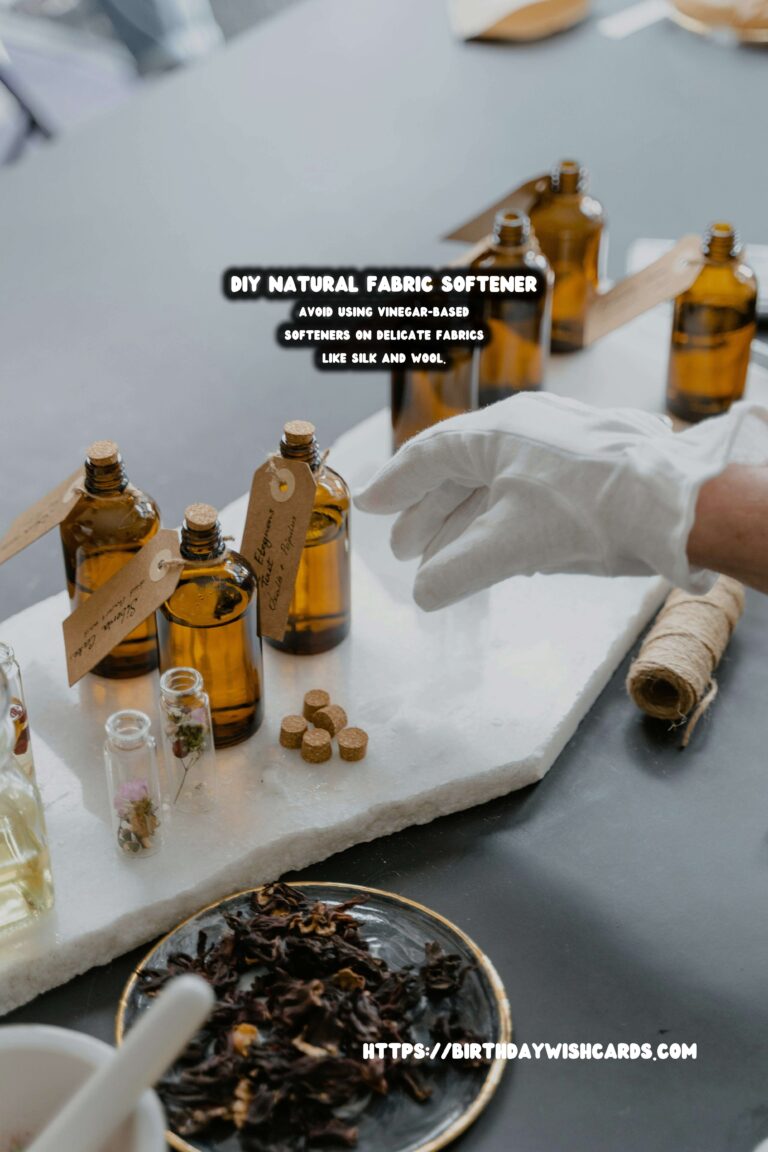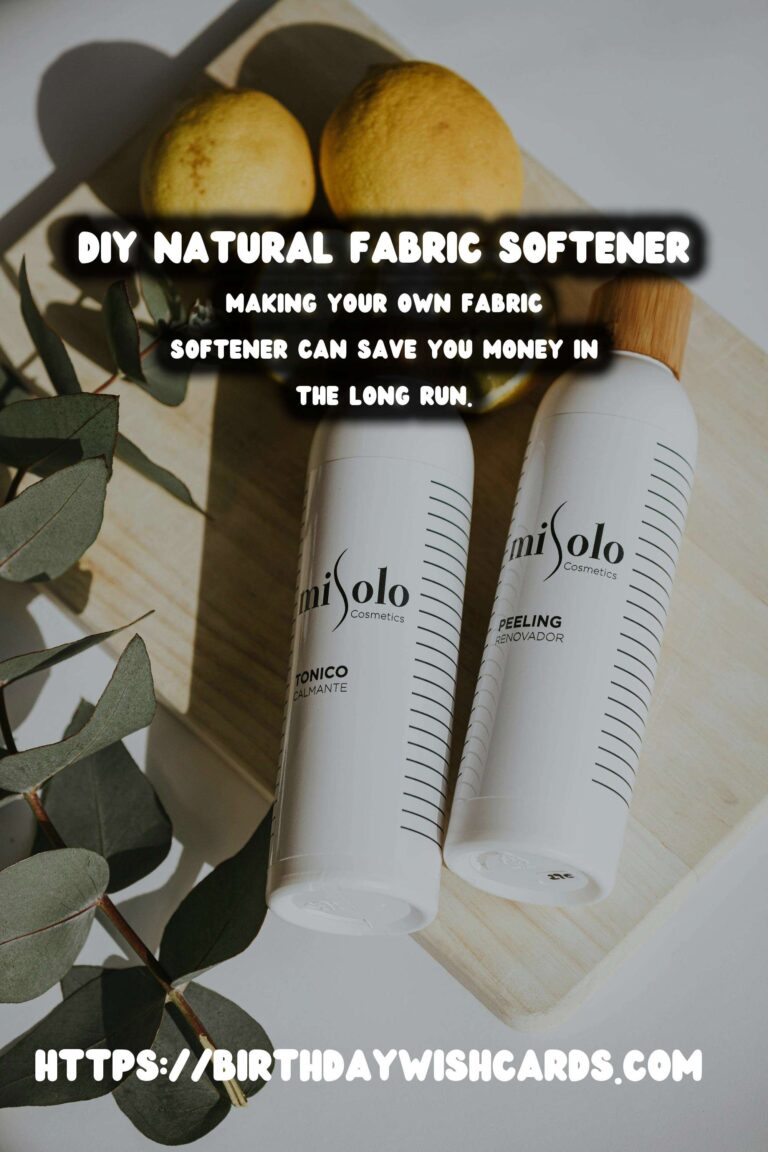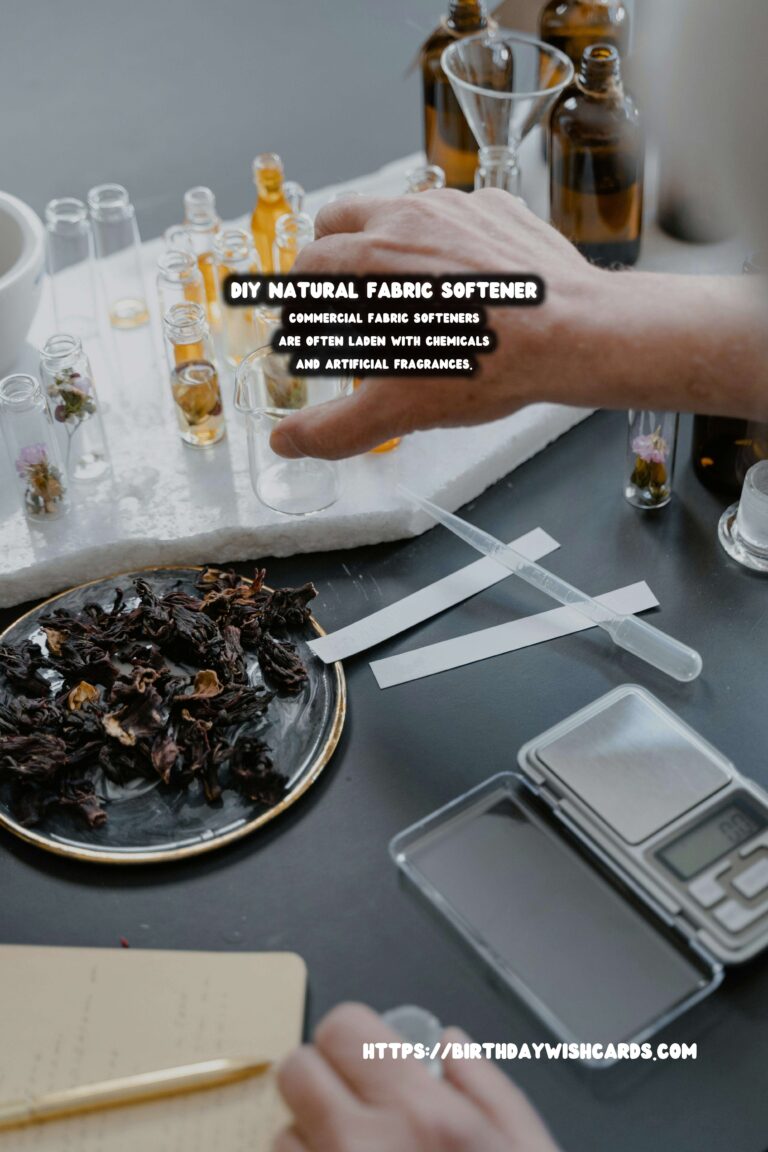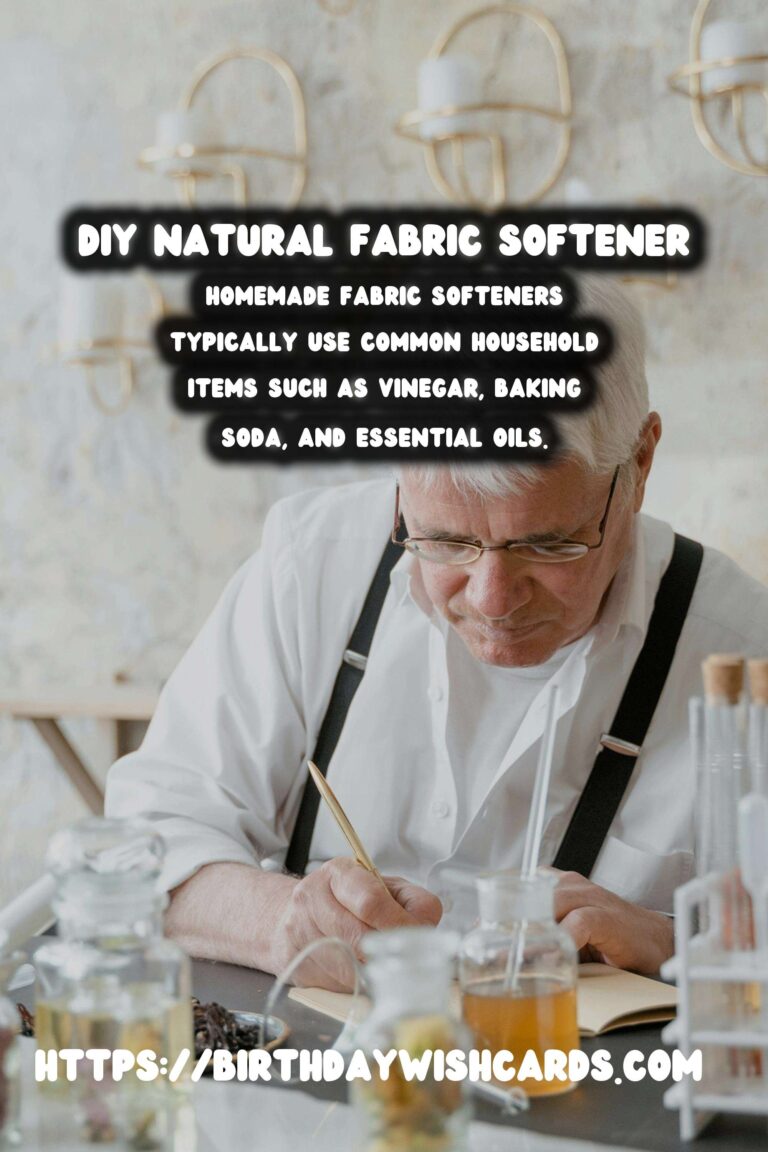
In today’s world, more and more people are turning to natural and homemade alternatives for everyday household items. One such item is fabric softener. Commercial fabric softeners are often laden with chemicals and artificial fragrances that can be harsh on sensitive skin and harmful to the environment. Fortunately, making your own natural fabric softener at home is simple, cost-effective, and eco-friendly.
Why Choose a Homemade Natural Fabric Softener?
There are several benefits to creating your own fabric softener at home. First and foremost, you have complete control over the ingredients used, ensuring they are safe for your family and the environment. Homemade solutions are typically free from synthetic fragrances and dyes, which can cause skin irritations and allergic reactions.
Secondly, making your fabric softener can save you money in the long run. Many homemade recipes use common household items such as vinegar, baking soda, and essential oils, which are inexpensive and readily available.
Simple Recipes for Homemade Natural Fabric Softeners
Vinegar and Baking Soda Fabric Softener
This basic recipe uses vinegar and baking soda, both known for their cleaning and softening properties.
- 1 cup of white vinegar
- 1/2 cup of baking soda
- 5-10 drops of essential oil (optional, for fragrance)
Mix the vinegar and essential oil in a container. Slowly add the baking soda, allowing the fizzing to subside before adding more. Once combined, store the mixture in a sealed container. Use 1/4 cup per load of laundry in the fabric softener compartment.
Conditioner-Based Fabric Softener
This recipe uses a small amount of hair conditioner to achieve a silky finish on your clothes.
- 2 cups of water
- 1 cup of white vinegar
- 1/3 cup of hair conditioner (preferably unscented and natural)
Mix all ingredients in a jar until well-blended. Store in a sealed container and shake well before each use. Add a couple of tablespoons to each wash cycle.
Tips for Using Homemade Fabric Softeners
When using homemade fabric softeners, it’s essential to consider the type of laundry you’re doing. For example, avoid using vinegar-based softeners on delicate fabrics like silk and wool, as vinegar can be too harsh. Instead, opt for a conditioner-based recipe.
Additionally, do not pour homemade fabric softeners directly onto clothes, as this can cause staining. Always add them to the fabric softener compartment of your washing machine.
Conclusion
Making your own natural fabric softener is a simple and rewarding process that benefits both your health and the environment. By choosing natural ingredients, you can enjoy soft, fragrant laundry without the worry of harmful chemicals. Try these recipes today and experience the difference for yourself!
Commercial fabric softeners are often laden with chemicals and artificial fragrances. Making your own fabric softener can save you money in the long run. Homemade fabric softeners typically use common household items such as vinegar, baking soda, and essential oils. Avoid using vinegar-based softeners on delicate fabrics like silk and wool. By choosing natural ingredients, you can enjoy soft, fragrant laundry without harmful chemicals. 









#Homemade #Natural #FabricSoftener #EcoFriendly #DIY




